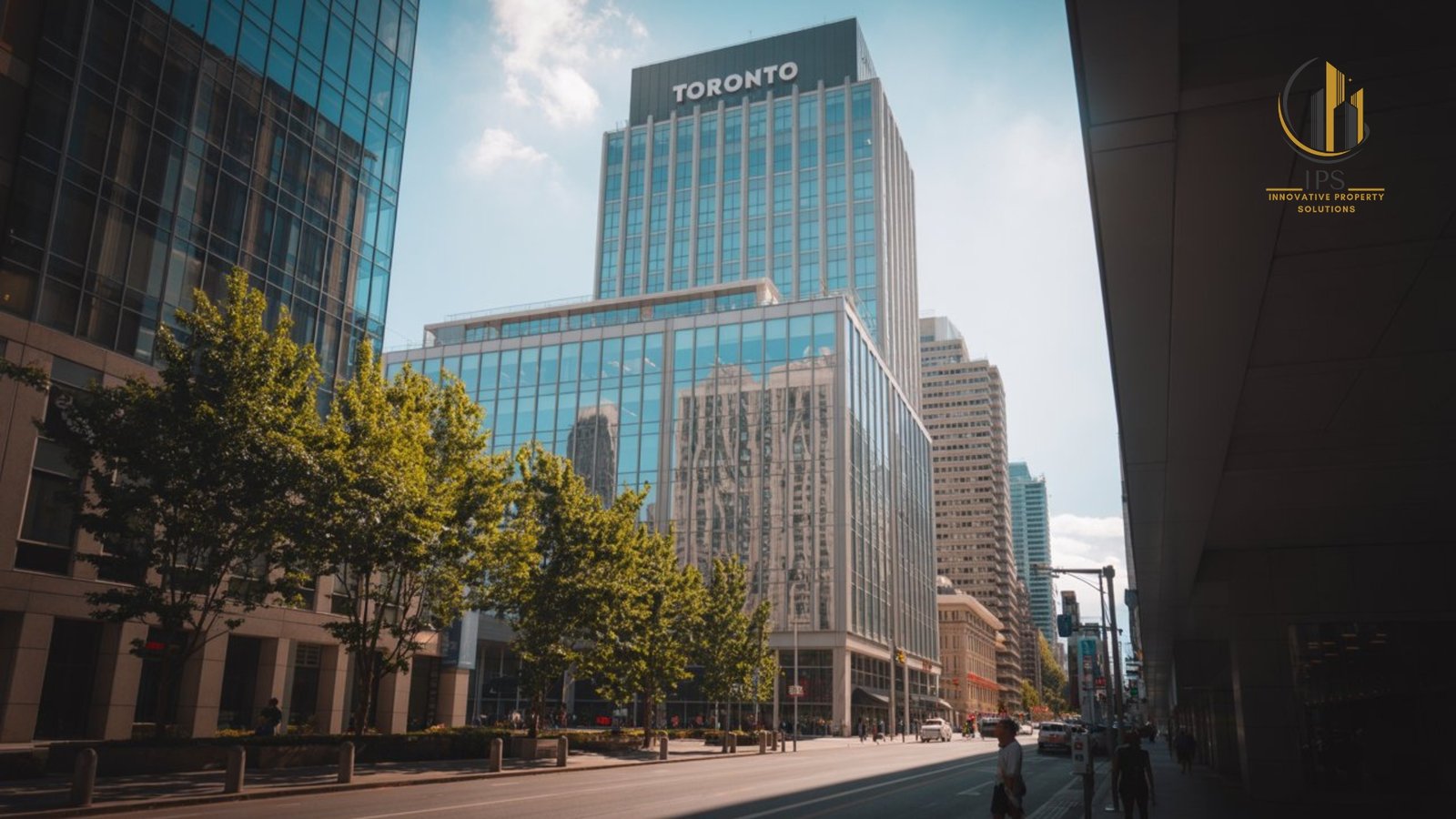
In Ontario’s competitive real estate market, office buildings stand as some of the most complex assets to value accurately. Whether you own a small professional building in Mississauga, a multi-tenant tower in downtown Toronto, or a suburban business park in Vaughan, knowing the precise worth of your office property is critical for financing, selling, tax planning, or long-term investment strategies.
Among the various methods used by professional appraisers, the Discounted Cash Flow (DCF) approach has emerged as one of the most sophisticated and forward-looking techniques for evaluating commercial income-producing properties. At IPS, we have seen first-hand how the DCF method provides deeper insights for property owners and investors — revealing not just what the property is worth today, but what it could be worth in the years ahead.
In this guide, we’ll explore how the DCF approach works, why it is especially relevant for office building appraisals in Ontario, and what factors can dramatically impact your property’s valuation. We’ll also walk through real-world considerations in the Toronto and Greater Toronto Area (GTA) market so you can see how professional appraisers like IPS bring accuracy and clarity to this complex process.
Understanding the Discounted Cash Flow Approach
At its core, the DCF approach is built around the idea that a property’s value is tied to the future income it can generate. Instead of looking only at current rent rolls or recent comparable sales, this method projects the property’s future net operating income over a set period (often 5 to 10 years) and then “discounts” those cash flows back to their present value using an appropriate discount rate.
In simple terms, you’re asking: If this property will earn certain amounts of income in the future, what is that income worth in today’s dollars?
For office buildings, this is especially useful because tenancy arrangements, lease expirations, vacancy rates, and market conditions can all shift significantly over time. The DCF approach captures these moving parts, giving owners and investors a more nuanced view of value than a simple income capitalization or sales comparison might provide.
Why the DCF Method Is Ideal for Office Building Valuations in Ontario
Ontario’s office market is anything but static. In Toronto, the landscape has been shaped by new developments in the core, shifts toward hybrid work arrangements, and demand changes in suburban markets. An office tower in the Financial District may see very different rental dynamics than a medical office plaza in Markham or a corporate campus in Burlington.
The DCF method is particularly suited to these variations because it allows appraisers to:
- Factor in anticipated lease renewals or expirations and the potential for rent adjustments
- Account for vacancy and absorption rates based on local submarket trends
- Reflect market rent growth forecasts specific to the property’s location
- Adjust for capital expenditures needed to maintain or improve competitiveness
- Incorporate exit strategies, such as sale or redevelopment potential, at the end of the projection period
IPS often recommends the DCF approach for institutional-grade office buildings, multi-tenant properties, or any asset with complex leasing structures because it aligns closely with how sophisticated investors evaluate their acquisitions.
Step-by-Step Breakdown of the DCF Process in an Office Appraisal
While each appraisal engagement is unique, the process generally follows several key steps. At IPS, our commercial appraisers follow a methodical, transparent process to ensure accuracy.
1. Gathering Property and Market Data
This stage involves collecting detailed property information: floor plans, lease agreements, tenant rosters, operating statements, and capital expenditure records. On the market side, we study rental rate comparables, vacancy trends, competitive inventory, and broader economic indicators in the GTA.
2. Forecasting Net Operating Income (NOI)
The next step is projecting annual cash flows. For each year in the projection period, we estimate gross rental income, deduct vacancy and credit losses, and subtract operating expenses to arrive at NOI. These projections factor in market rent growth and expected changes in tenancy.
3. Selecting the Discount Rate
The discount rate reflects the required return an investor would expect, given the property’s risk profile. For Toronto office buildings, this may be influenced by the Government of Canada “risk‑free” bond yields, relevant risk factors and broader market conditions.
4. Calculating the Terminal Value
At the end of the projection period, the property is assumed to be sold. The terminal value is estimated using a market-based capitalization rate applied to the final year’s stabilized NOI, then discounted back to present value.
5. Present Value Summation
Each year’s projected NOI, along with the terminal value, is discounted to today’s dollars using the selected discount rate. The sum of these present values equals the property’s DCF-derived value.
How Local Toronto and Ontario Market Dynamics Shape the Numbers
The beauty of the DCF method is its adaptability to market realities. But this flexibility also means it relies heavily on accurate, local market knowledge. That’s where a firm like IPS brings a critical advantage.
For example, if an office building is located in Toronto’s Liberty Village — an area with a strong tech tenant base but rising sublease availability — our projections might include slightly longer lease-up periods for vacant space and moderate rental growth. In contrast, an office in Oakville with long-term medical tenants might warrant higher stability assumptions and lower vacancy allowances.
The Role of Tenant Mix in Office Building Valuation
One of the most overlooked drivers of office building value is tenant mix. An office tower with a diversified roster of tenants in different industries tends to carry less income risk than one heavily reliant on a single sector. The DCF approach allows this nuance to be built directly into the cash flow model, adjusting discount rates or vacancy assumptions accordingly.
Risks and Sensitivities in the DCF Model
Because the DCF approach involves projecting years into the future, it’s sensitive to changes in key assumptions. A small shift in projected rental growth or discount rates can meaningfully alter the final valuation. This is why IPS runs sensitivity analyses, testing how value changes under different scenarios — an approach that’s especially important in uncertain economic climates.
Why Work with IPS for a DCF-Based Office Appraisal in Ontario
IPS has built a reputation in the GTA for delivering accurate, defensible, and investment-grade commercial property valuations. Our team understands both the technical and practical sides of the DCF approach. We combine robust financial modelling with deep local market intelligence, ensuring our clients receive valuations that hold up under lender scrutiny, investor due diligence, or legal proceedings.
From smaller professional buildings to high-rise office towers, IPS tailors each appraisal to the unique characteristics of the property and the needs of the client. And because we operate across Toronto and the broader Ontario market, we bring context that’s essential for credible valuations.
Final Thoughts: The Value of Looking Beyond the Present
A DCF-based office building appraisal is more than just a number on paper. It’s a financial roadmap that reflects where your property stands today and where it’s likely headed tomorrow. In markets like Toronto, where tenant demand, zoning regulations, and macroeconomic conditions are constantly evolving, this forward-looking perspective can be the difference between making a profitable decision and missing a strategic opportunity.
If you want to know what your office building is truly worth — not just in the current market, but in the years ahead — working with a trusted appraisal firm like IPS ensures you have the insight to make those decisions with confidence.


